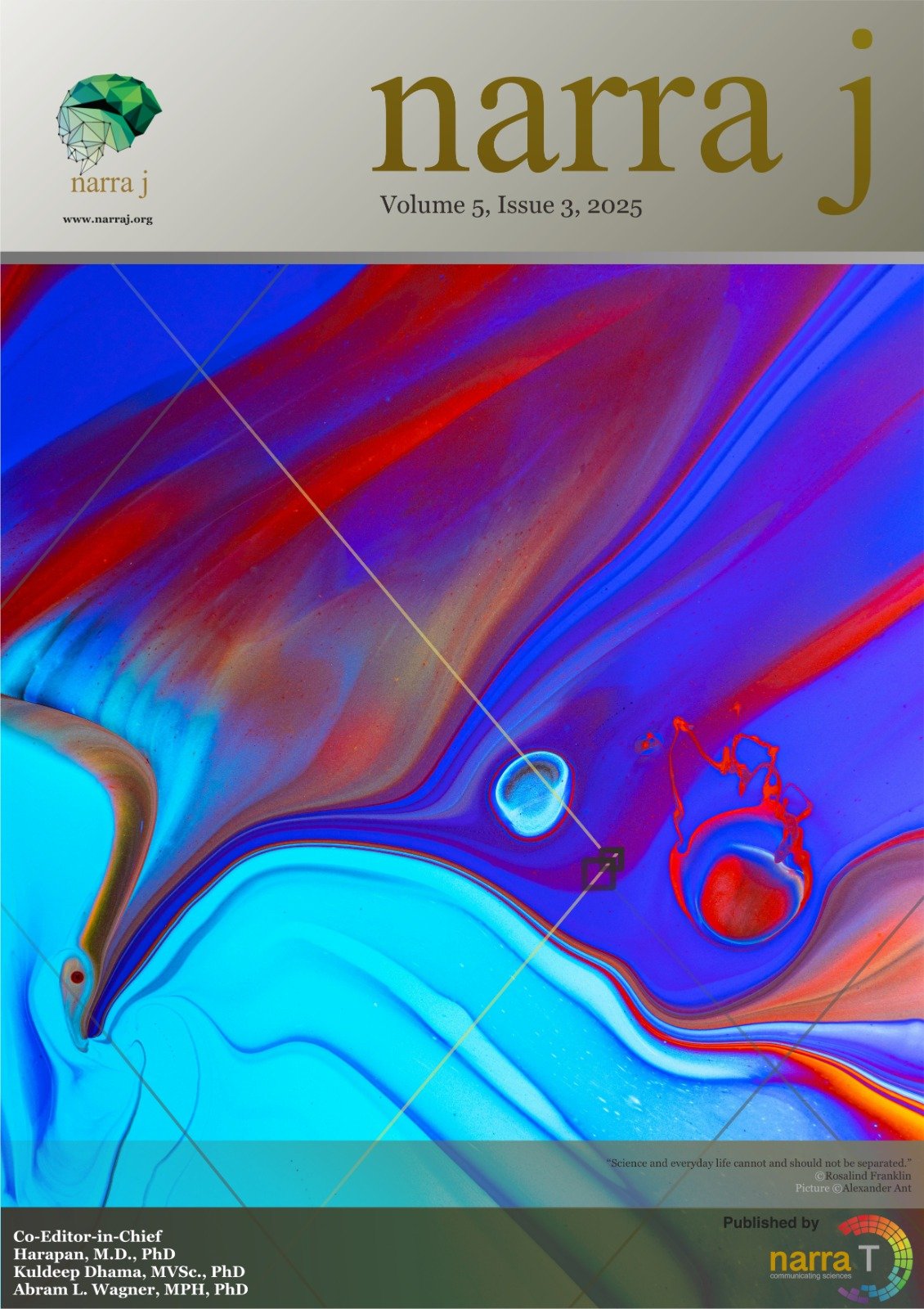Development of decellularized mouse auricular scaffolds using sodium dodecyl sulfate immersion-agitation for microtia tissue engineering
DOI:
https://doi.org/10.52225/narra.v5i3.1610Keywords:
Auricular scaffold, decellularization, immersion-agitation, microtia, sodium dodecyl sulfateAbstract
Effective treatment strategies for microtia remain limited due to the side effects and shortcomings associated with current therapeutic approaches. Tissue engineering, particularly the development of biological scaffolds, has emerged as a promising alternative. However, research on auricular scaffold fabrication in murine models using sodium dodecyl sulfate (SDS) and the immersion–agitation decellularization technique remains scarce. The aim of this study was to evaluate the effects of varying SDS concentrations on the decellularization efficiency and extracellular matrix (ECM) preservation of murine auricular tissue for scaffold development. Auricular tissues from mice (n=4) were immersed in Erlenmeyer flasks containing 0.1%, 0.5%, or 1% SDS and subjected to continuous agitation until the tissues became macroscopically translucent. Qualitative assessments included macroscopic appearance and microscopic evaluation using hematoxylin–eosin and Masson's trichrome staining. Quantitative analysis involved counting residual nuclei, while semiquantitative analysis of ECM area fractions was performed using ImageJ software. Statistical comparisons were conducted using one-way analysis of variance (ANOVA), with significance defined as p<0.05. The results demonstrated that the decellularized scaffolds exhibited macroscopic translucency, significantly reduced nuclear content (p=0.001), and preserved ECM integrity (p=0.012). Among the tested concentrations, 0.5% SDS provided the optimal balance between effective decellularization and ECM preservation. These findings support the potential application of murine auricular scaffolds decellularized with 0.5% SDS via the immersion–agitation method for future microtia tissue engineering.
Downloads
Downloads
How to Cite
Issue
Section
Citations
License
Copyright (c) 2025 Putu KD. Jaya, Anak AAAP. Dewi, Asri Lestarini, Ni PD. Witari, Luh G. Evayanti

This work is licensed under a Creative Commons Attribution-NonCommercial 4.0 International License.



